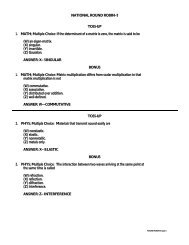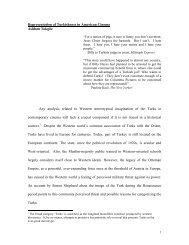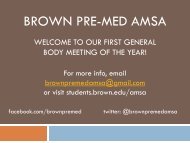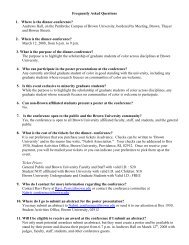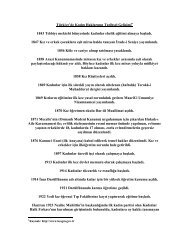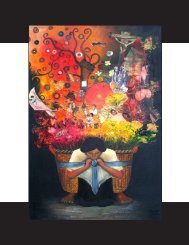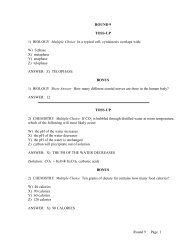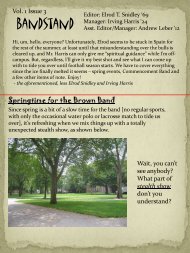Download as a .pdf file - Brown University
Download as a .pdf file - Brown University
Download as a .pdf file - Brown University
You also want an ePaper? Increase the reach of your titles
YUMPU automatically turns print PDFs into web optimized ePapers that Google loves.
ZIGGURAT<br />
They told him that they were the people often spoken of in former<br />
days by [Nxele] and Umlanjeni, <strong>as</strong> being a strong people, who would<br />
in the course of time render the [Xhosa] the <strong>as</strong>sistance they required<br />
in driving the white men out of the land…and in order that this may<br />
be carried into effect, they must prove themselves deserving by acting<br />
up to their commands, which are, first to throw away all bewitching<br />
matter – second, to kill all their cattle, so <strong>as</strong> to be stocked with others<br />
that are free from any dise<strong>as</strong>e. 2<br />
The numerical scale of the dis<strong>as</strong>ter caused by the ensuing Xhosa<br />
Cattle-Killing movement of 1856-7 is clear. In one year, 40,000 Xhosa<br />
people died of starvation, another 150,000 people were displaced, 400,000<br />
cattle were slaughtered, and over half a million acres of land were lost by<br />
the Xhosa. 3 Scholars have probed into and surmised three main re<strong>as</strong>ons<br />
for this movement: the threat to the Xhosa of war and land loss caused by<br />
colonialism, the integration of Christian ide<strong>as</strong> into the traditional Xhosa<br />
belief system, and the dev<strong>as</strong>tation caused by lungsickness on Xhosa cattle<br />
herds. Yet, in all of this analysis, inadequate attention is paid to the exact<br />
identity of who is <strong>as</strong>sociated with the cattle-killing movement. Who w<strong>as</strong> the<br />
prophetess who spurred this movement and to whom did her prophecies<br />
speak Despite otherwise quite sophisticated analyses of political, religious,<br />
social, and environmental conditions in Xhosa society that influenced this<br />
millenarian movement, most key authors and historians have side-stepped<br />
the implication of Nongqawuse’s identity <strong>as</strong> a woman and the genderconscious<br />
analysis that should follow.<br />
As Helen Bradford aptly points out in her study of the cattle-killings,<br />
it is necessary to reenlist gender <strong>as</strong> a tool of analysis in understanding<br />
the Cattle-Killing. 4 Nongqawuse’s prophecies and the Xhosa Cattle-<br />
Killing movement are commonly described and explained in the context<br />
of the colonial oppression and exploitation of the Xhosa people during<br />
the nineteenth century. Yet any discussion of the importance of analyzing<br />
Nongqawuse’s prophecies and teachings with specific attention to her<br />
position <strong>as</strong> a young Xhosa woman is ignored, despite that the very stuff<br />
of her prophecies suggests it: cattle and grain are goods fundamentally<br />
linked with women, <strong>as</strong> bridewealth and a source of labor, respectively.<br />
In order to fully understand the Cattle-Killings, the movement must be<br />
looked at within the context of gender, <strong>as</strong> well <strong>as</strong> that of colonialism, the



